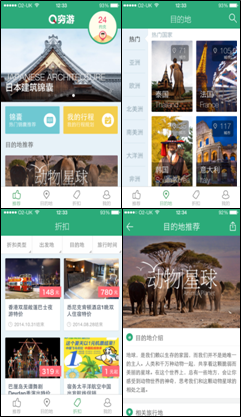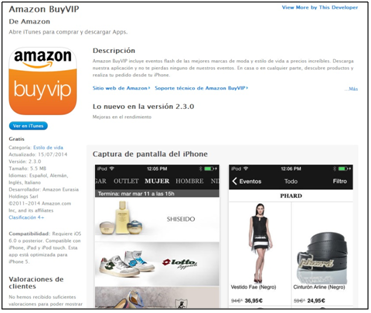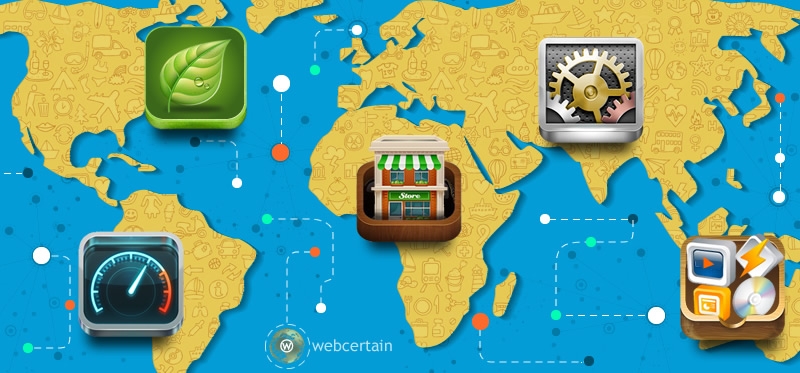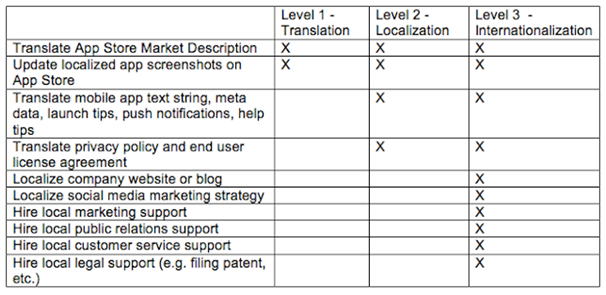Back in March, Webcertain published a post looking at the importance of mobile applications in Global Mobile Strategies, so I thought I would build on this and introduce to you five easy tips to help you localise your app in order to appeal to your wider market overseas, but first let’s look at some figures…
According to a study by Flurry Analytics, of the top ten largest international smartphone markets, eight of these are non-English speaking regions, and the number of global mobile users without smartphones (but who could afford to use one) means that there is also a huge potential market out there. Leading this category are China, India and Japan with 112 million, 75 million and 61 million potential smartphone users respectively. That’s a whopping 248 million potential users of your mobile app! Impressive, right?!
In the long run it might be worth considering localising your app by creating multilingual versions in Chinese, Hindi, Japanese, Russian, Brazilian Portuguese as well as the main European languages, but let’s not get carried away. It’s not all about translation, there are several other elements which you should consider when moving forward with your mobile strategy on an international scale, so here are our tips to help you on your way.
%GC_SERVICE=1481%
 1. A Natural Look and Feel:
1. A Natural Look and Feel:
When a smartphone user decides to download your app their expectations are usually quite high. They expect an app that is easy to use and navigate, that’s engaging and fulfils a purpose, and that is perfectly targeted at them as the intended end user. App users today are pretty demanding and if you want to make sure you get those five-star reviews then it’s important that you app looks and feels like it was built for their market.
 Although it can be difficult for companies to know whether they will eventually launch their app on an international scale it’s still worth keeping internationalisation in mind during the developmental stage, but I’ll cover that in the next section.
Although it can be difficult for companies to know whether they will eventually launch their app on an international scale it’s still worth keeping internationalisation in mind during the developmental stage, but I’ll cover that in the next section.
Let’s look at the following example which is a travel and tourism app aimed at Chinese users, it’s a bit like “TripAdvisor”.
This app has been well developed for the Chinese market, but what if they wanted to localise this to be suitable for international users? There are a lot of factors which play a part here, not just linguistically but also technically from an engineering perspective. Your overall aim should be to create a replica of your existing app which takes into consideration local currency, time and date, images, icons, symbols and colours, after all different cultures, religions and communities perceive things differently and this should definitely be considered prior to the development stage.
 2. Build Requirements
2. Build Requirements
As I’ve briefly mentioned, there are certain things which should be taken into consideration during the development of a mobile application. Below are just a few of the things your engineers should incorporate into your project brief:
- Which mobile platform are you creating your app for? iPhone, Blackberry, Android, Windows, iPad etc.
- Are there any limitations in-built to your app which will be affected during the localisation process? For example, string length limitations which will be altered due to expansion in the translated text, in turn causing breakages in the overall layout of the app.
- Can your application handle double-byte characters for Asian languages like Chinese and Japanese?
- Does your software have the capability to accommodate languages which read from right-to-left, such as Arabic and Hebrew?
For further information on the technical aspects of software localisation projects please refer to my past post.
Conducting a pseudo-translation on the content of your existing app will identify where potential issues may arise during the localisation of your application which may not have been identified until later down the line, potentially costing you more time and money in the long run. This sort of a dry-run is definitely a good investment during the initial testing stage.
%GC_SERVICE=1688%
 3. Take your App for a Test Drive
3. Take your App for a Test Drive
It’s essential that your app undergoes rigorous testing before being made available to the masses. Like any other translation project which has heavy involvement on an engineering side there are several testing stages which a mobile application should go through, such as:
- Linguistic testing
- Cosmetic testing
- Functional testing
- Cross-platform testing
- Regression testing
- User Experience (UX) testing
It would be advisable that time is also taken to either develop a testing platform or select an appropriate simulator, as well as using physical handsets from each of your target country’s network operators during the testing stage. Ironing out the creases at this stage will result in less updates once your app has been launched in your new territory, which is good news for both your developers and your end user.
 4. The App Stores:
4. The App Stores:
“Customers are more likely to read about your app if it’s in their native language. It just makes it easier for more people to learn about your app.” – Apple
 In the words of Apple, it’s important that you market your app in the language of your target audience in order to maximise your brand awareness, visibility and number of downloads. Localising your content for the app store is just as important as localising the app itself. Local versions of the Apple and Google Play Stores are going to be the go to places for international users to search and download their apps of choice (Unless you’re in China!).
In the words of Apple, it’s important that you market your app in the language of your target audience in order to maximise your brand awareness, visibility and number of downloads. Localising your content for the app store is just as important as localising the app itself. Local versions of the Apple and Google Play Stores are going to be the go to places for international users to search and download their apps of choice (Unless you’re in China!).
Localised app name, description, keywords and screenshots from your newly localised application will do wonders for your Global Mobile Strategy, and takes us back to our first point about making your app appear like it was originally intended for use by your international users.
Take the example below which is a screenshot of Amazon’s “BuyVIP” application as found in the Spanish version of the Apple App Store, which is a great illustration of the way you can maximise your potential overseas.
You can also optimise the content you have in the app store meaning that selecting the right keywords and incorporating them into your app descriptions will help to bump up your app in relevant search results.
 5. Marketing Collateral
5. Marketing Collateral
So let’s check…you’ve thoroughly researched, localised and tested your mobile application, as well as adapting your app store descriptions for your target market, but what else can you do as part of your international strategy?
Well, further actions you could consider include localising your company’s website or blog site, as well as any social media activities you might conduct in your home market. Increasing your brand awareness is key and will certainly support your efforts moving forward.
As a last note, in an article on launching apps in international markets, Mashable provide the following to-do lists which you might find useful for future reference. Here’s to your global mobile invasion!











One Response
Great insights and tips in this article, thanks! There is a high demand for mobile app localization, so, yes, it’s worth investing in this process. Moreover, the localization industry becomes a priority when targeting international markets. I’ve been reading some interesting news about the topic here: http://l10nhub.com/